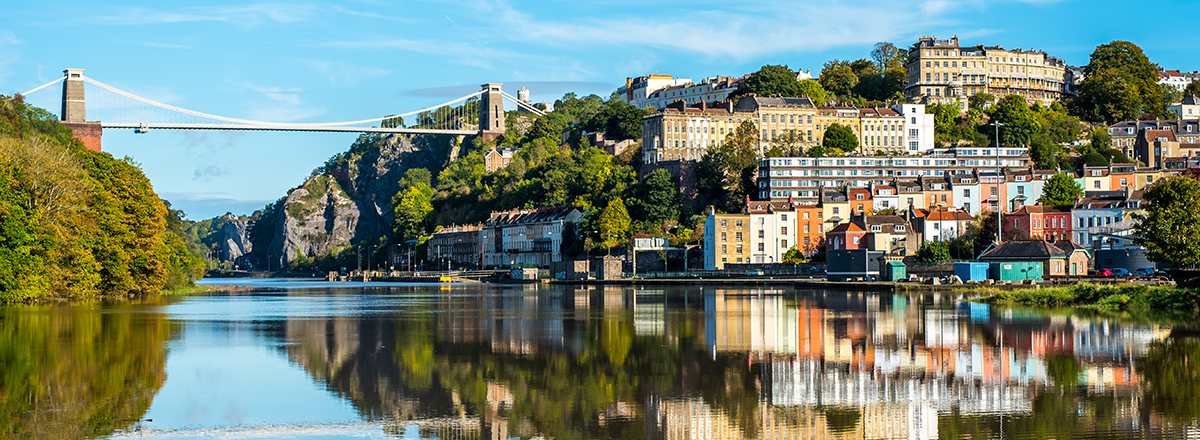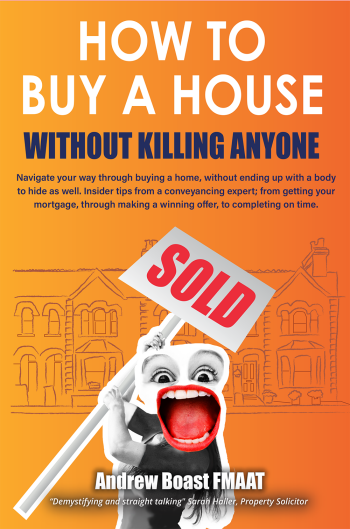Bristol House Prices Highest Ever
- Worst month for volume of property sales in CoB since 2011
- Record-breaking high for Bristol's average property prices
- Homes in Bristol cost 8.2 times more than they did 30 years ago

How does the Bank of England Influence the Bristol property market?
House prices nationwide rose with inflation in 2021 but fell with the base rate hikes in 2023. As soon as the base rate levelled out in June 2023, City of Bristol (CoB) house prices began climbing again and continued to do so, except for a slight fall from October to November.
The Bank of England (BoE) is keeping the base rate steady at a higher level to bring inflation down. Uncontrolled inflation means that goods and services (and houses) get increasingly expensive, meaning your pounds are worth less. The bankers planned to bring the base rate down when inflation reached a healthy level of 2%, but rising unemployment means they may be forced to bring it down as soon as March, although it will be a small rate drop.
The base rate directly affects mortgage rates; lower rates mean cheaper borrowing and cheaper borrowing often means a more active housing market and rising house prices. Read more in our article Should I Fix My Mortgage for 2 or 5 Years?
Will there be a UK recession in 2025?
The Quarterly Economic Forecast (QEF) predicts the UK economy will grow by 1.3% in 2025 and 1.5% in 2026. Source: British Chambers of Commerce (BCC).
This, however, is well below the pre-pandemic average. NEISR estimate that Britain's poorest households will not recover fully until 2027.
Lowest volume of property sales in nearly 13 years
The latest sales volume data from the Land Registry (October 2023) shows the worst month for sales in the City of Bristol since February 2011's meagre 305, and the worst October on record, at 319 home sales.
The City of Bristol saw approximately 55% of the sales volume of the same month the previous year, which reflects the trend in England and Wales as a whole (also 55%).
Bristol property prices continue to climb above the national average.
Housing prices in Bristol have been soaring, relative to the rest of England and Wales, since 2014, and the gap continues to rise. While average house prices in England and Wales hit a ceiling in August last year, property prices in the City of Bristol have been climbing sharply since June, with the very slight exception of an instantly-recovered drop of less than £1,000 from October to November last year.
House prices in Bristol cost eight times more than 30 years ago
The latest Land Registry Data for actual sold prices (December 2023) records average house prices in the City of Bristol at £363,799, a record high that would buy you 8.2 houses at £44,387 in 1995.
If you want to save money on a property purchase in the Bristol area, read our article on How to negotiate house prices.
If you want to maximise your sale price on a property sale in the Bristol area, read our articles What Not to Fix When Selling a House, How to Sell Your House, and Kerb Appeal; Sell Your Home for More.

Bath and North East Somerset has the highest relative volume of property sales in the Bristol area
Bath and NE Somerset saw 61% of last year's property sales for the month of October, closely followed by North Somerset at 60%; that's a healthy 5-6% more active than the City of Bristol, and the nation as a whole.
South Gloucestershire was the only part of Bristol to fall behind, at 52%.
The most expensive part of the Bristol area to buy a home is Bath and North East Somerset
A 5 storey, listed, Georgian townhouse in Bath will cost you between 4 and 5 million pounds, but one bedroom apartments can be found for under £150,000. The City of Bath is an elegant, roman spa town known for its honey coloured, Georgian architecture, and Jane Austen's house.
A whopping two thirds of Bath and North East Somerset (B&NES) is green belt, making it a green haven of rivers and rolling hills. Chew Valley Lake is a man made reservoir with recreational boating and fishing, as well as being both a Site of Special Scientific Interest and a Special Protection Area, for nature lovers.
Is it expensive to buy a house in Bristol?
Average house prices in all districts in the Bristol area are more than £40,000 over the average for England and Wales. If you're looking for a more affordable home within a commute of the City, North Somerset has the lowest average property prices, at £342,082. North Somerset towns with lower average house prices include Pill and Weston-Super-Mare.
Town | Distance to City Centre | Average Price |
|---|---|---|
Town Pill | Distance to City Centre 7 miles | Average Price £327,630 |
Town Weston-Super-Mare | Distance to City Centre 21 miles | Average Price £266,771 |
(Source: Rightmove)
Pill is just a short drive, or a 20-30 minute bus ride, into the city centre, with rail links planned to reopen in 2024. Situated on the southern banks of the River Avon, Pill is a pleasant creek and ancient harbour, which served to export ceramics from the nearby, 12th Century, Ham Green Pottery. Pill is close the the M5 motorway and connected to Clevedon, Weston-super-Mare, Bridgwater, Chard and Seaton by National Cycle Network 33.
Buying a home in Pill is a tidy £36,169 cheaper than in the City of Bristol.
For those who can't bear to leave the city, Hartcliffe (£241,685) and Withywood (£260,75) have the lowest average house prices in Bristol.
Houses in North Somerset just £642 under record high
While house prices in England and Wales are still to catch up to their post-pandemic peak, the City of Bristol has hit record highs, and North Somerset isn't far behind. In November 2022, the average home in North Somerset peaked at £342,724, and according to the latest Land Registry data (December 2023), prices have again reached £342,082.
B&NES was first to catch up in October 2023, but average prices fell steeply there, in December. South Gloucestershire house prices remain around £9,000 under their record high from November 2022.
New builds in Bristol starting to outperform older houses
This is particularly interesting as they have remained fairly neck-and-neck in Bristol since records began in 1995. New houses generally come at a premium, so this in an indication that the property which was being built in the City of Bristol has either been of slightly below average size and quality, and/or there has been a fairly consistent range size and quality of new build development which reflects the housing stock as a whole.
Now that the graph begins to deviate, We can infer that one or both of two things is happening: either buyers are driving up the prices of new builds based on higher demand, or a greater portion of high-value homes are being built, versus 'affordable housing'.
This deviation is even clearer in the north, in Lancashire, for example, new homes in Lancashire cost almost double the amount of existing property, driving the total average home up by £6,867.
What is next for the Bristol housing market?
Bristol City Council have major development and regeneration projects planned in the city centre, as well as Bedminster Green, Bristol Temple Quarter, Filwood Green, Frome Gateway, Knowle West, Western Harbour, Whitehouse street and the Harbour.
"We're working to improve the city's built environment, reduce social exclusion in our most disadvantaged neighbourhoods, strengthen the city's economy and improve access to employment and training, particularly for people living in deprived neighbourhoods." - Bristol City Council.
Their goals are to improve Bristol's built environment, strengthen the economy, and improve access to jobs and training; all of which can boost the property market by increasing the buying power of residents, and the value of homes in the area.
Bristol is the UK’s only city to be awarded European Green Capital. Its City Leap Energy Partnership packages together net zero projects, which is expected to attract private investment of over £1bn for smart, sustainable energy.
Should I buy a house in Bristol?
Bristol is an excellent location for young people, and is regularly voted one of the best places to live in the UK, for many reasons:
- Diversity
- Art, Music & Culture
- Historic waterfront
- Transport links
- Low crime rates
- Vibrant atmosphere
- Education and employment opportunities
- Ethical & sustainable ethos
Property prices are higher than average in Bristol and have proven more resilient through the post-pandemic wobbles, compared to the rest of the country. It it more expensive for a reason and there are still bargains to be found in and around the city.
Prices are again on the rise, and though we may see a little more fluctuation as the Bank of England battles inflation and the economy continues to recover from the effects Brexit, the Pandemic, and the Truss/Kwarteng budget of 2022, economists predict that the house prices will rise again steadily through 2025-2028.
If you can afford to buy now, it is likely you'll be able to switch to a more affordable mortgage rate in a couple of years, by which point your investment will hopefully have appreciated in value, as property in Bristol consistently outperforms the national average.
If you are renting and can afford to buy at the current rate of interest, this may be a much more desirable option than saving for a bigger deposit, as rents are set to rise nationally this year by 5% or more (but only 2% in London), whereas mortgage rates are likely to fall.
However, if you are stretching your budget to buy in the area, consider a cheaper location, or saving for a bit longer. We may not be out of the woods yet, and if the base rate (and mortgage rates) rise, you may not be able to keep up with your monthly repayments. Worse yet, if prices do fall, you could end up in negative equity. Buying a home with a mortgage always comes with risks.
If you are ready to buy a house in Bristol or the surrounding area, we can handle your purchase with a dedicated SAM Conveyancing Consultant to manage your transaction alongside one of our hand-selected panel solicitors.
"After a dire end to 2023, January and February show a mini-bubble caused by the high mortgage rates at the end of last year which supressed new home buyers and movers and a subsequent rush to the market as rates fell last month. So much so, that mortgage lenders are now increasing their mortgage rates again, in a bid to slow down the market before an imminent drop in the base rate."
"I don't think the higher rates will dampen the effects of the mini-bubble for home buyers, but it will slow the remortgage market as borrowers hold out for a better deal. This will improve in April; after, I predict, the base rate will have been reduced to 5% in the March review by the Bank of England."
- Andrew Boast FMAAT MIC
CEO and Author | SAM Conveyancing
Sources: Latest data from - Gov.UK, Bank of England, UK House Price Index, ONS, Property Mark (NAEA), and Rightmove.
Caragh is an excellent writer and copy editor of books, news articles and editorials. She has written extensively for SAM for a variety of conveyancing, survey, property law and mortgage-related articles.
Andrew started his career in 2000 working within conveyancing solicitor firms and grew hands-on knowledge of a wide variety of conveyancing challenges and solutions. After helping in excess of 50,000 clients in his career, he uses all this experience within his article writing for SAM, mainstream media and his self published book How to Buy a House Without Killing Anyone.

Without Killing Anyone
This book could be the difference between every mover’s dream, buying and moving into your new home stress free, or, stress, missed deadlines, legal disasters, building defects, and possibly the collapse of the whole transaction. (Costing you a small fortune, a head full of grey hairs, and, driving you to threaten the life of your solicitor, lender, co-owners, family, partner, or some combination of all five).
With more than two decades’ experience in the conveyancing sector and over 50,000 successful client moves under his belt, Andrew shares insider tips and advice to empower you as a buyer, giving you the tools to make the best decisions for your circumstances and ease the chaos.
Available on Amazon | Kindle | Paperback









